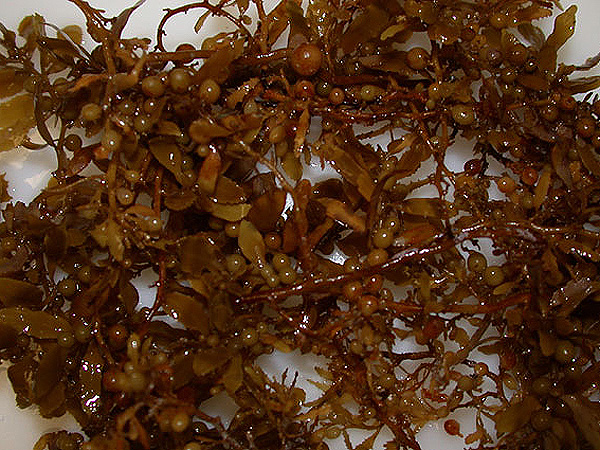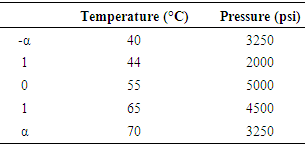-
Paper Information
- Paper Submission
-
Journal Information
- About This Journal
- Editorial Board
- Current Issue
- Archive
- Author Guidelines
- Contact Us
International Journal of Textile Science
p-ISSN: 2325-0119 e-ISSN: 2325-0100
2016; 5(6): 141-144
doi:10.5923/j.textile.20160506.03

Comparison of Supercritical Fluid Extraction and Ultrasound-assisted Extraction of Natural Dyes from a Brown Seaweed (Sargassum spinosum)
Nabila Talib1, Mohd Rozi Ahmad2, Khudzir Ismail3, Muhammad Ismail Ab Kadir2
1Faculty of Applied Sciences, Universiti Teknologi MARA (UiTM), Malaysia
2Textile Research Group, Faculty of Applied Sciences, Universiti Teknologi MARA (UiTM), Malaysia
3School of Chemistry & Environment, Faculty of Applied Sciences, Universiti Teknologi MARA (UiTM), Malaysia
Correspondence to: Mohd Rozi Ahmad, Textile Research Group, Faculty of Applied Sciences, Universiti Teknologi MARA (UiTM), Malaysia.
| Email: |  |
Copyright © 2016 Scientific & Academic Publishing. All Rights Reserved.
This work is licensed under the Creative Commons Attribution International License (CC BY).
http://creativecommons.org/licenses/by/4.0/

This paper discusses on the yield, color coordinates and color strength of dyes from Sargassum spinosum (Sargassum sp.) extracted via Supercritical Fluid Extraction (SFE) and Ultrasound-assisted Extraction (UAE). An experimental design approach of response surface methodology (RSM) was applied for the SFE optimization. In terms of percentage yield, the yield extract obtained from SFE was 0.35% while UAE gave higher yield of about 0.91%. Both methods produced brownish green color dye with some differences in the lightness and saturation. The colorant from both extracts were measured using spectrophotometer to analyze the color with regard to L*a*b* values and K/S values (color strength). In short, although SFE yield was low in percentage as compared to UAE, the color strength in the yield extract of SFE was greater than the color strength of sample obtained from UAE.
Keywords: Supercritical Fluid Extraction (SFE), Ultrasound-assisted Extraction (UAE), Sargassum spinosum, Natural dyes
Cite this paper: Nabila Talib, Mohd Rozi Ahmad, Khudzir Ismail, Muhammad Ismail Ab Kadir, Comparison of Supercritical Fluid Extraction and Ultrasound-assisted Extraction of Natural Dyes from a Brown Seaweed (Sargassum spinosum), International Journal of Textile Science, Vol. 5 No. 6, 2016, pp. 141-144. doi: 10.5923/j.textile.20160506.03.
Article Outline
1. Introduction
- Seaweeds are macrophytic marine algae that grows in saltwater and can be categorized as either wild or cultivated [1]. They are available largely in shallow coastal waters and are harvested by man for centuries particularly in Japan and China as their staple food, fodder and manure [2]. Seaweeds contain more than 60 trace elements in a concentration much higher than in terrestrial plants. They also contain carbohydrates, protein, amino acids, iodine, bromine, vitamins and substance of stimulatory and antibiotic nature [3]. Apparently, seaweeds are also characterised according to their colour appearance such as blue seaweeds, green seaweeds, red seaweeds ad brown seaweeds [4]. It has been estimated that the seaweeds resources in the world comprise of 1460 million tons wet weight of brown algae and 261 million tons wet weight of red algae [2, 5]. The colour variation of seaweeds make them applicable as the source of natural dyes which was already established as food colouring and current approach is in textile coloration. There are pigments of carotenoids particularly inside the brown seaweeds that is proved to be the colour contributor [4, 6, 7]. The best part of this study is that the seaweed species of Sargassum sp. which is available in Malaysia has not yet been reported to be one of the potential source of natural dyes. There were many studies conducted world-widely on natural dyes extraction for application in food or textile coloration [8-11]. Latest researches related to utilization of natural colorants in textile application was from seaweed species other than Sargassum sp. which are Kappaphycus alvarezii and Caulerpa lentillifera extracted via conventional and microwave-assisted extraction methods. The colours from seaweed were reported as good to excellent rating from the shades of dyed fabrics except there is limitation in the lightfastness that gave poor rating [5, 7]. Generally the visual observation of colours from seaweed were earth colours that soothing to the eyes. Natural dyes are natural colorants extracted from natural resources mainly from parts of plants, flowers, macroalgae and microorganisms using old and conventional methods [8, 12]. The utilization of natural colorants is to overcome the problematic consequences caused by the application and processing of synthetic dyes which cause more harm than good towards the environment, human and end-products [13]. Natural dyes have become a global interest due to the increase awareness on the environment, safety and health hazards related with the use of synthetic dyes [14]. Currently, many researches are still being conducted to select potential and profitable sources of natural dyes and to study techniques to obtain optimum yield of dyes extracted from the natural sources to be reasonably applied on textile coloration. For this research, seaweed species of Sargassum sp. was used as the natural source of dye as it is among the most suitable species of brown seaweeds that is not consumed as food and the supply is abundance in Sabah water especially near Semporna and Mabul Island. The methods of extraction that are believed to match current demand and overcome the lack of conventional methods of extraction are SFE and UAE [15, 16]. The conventional methods of extraction always take longer time and require several processes in between to obtain a final pure extract [17]. Advanced methods of extraction such as UAE gives better option with regard to get higher yield of extracted material, however it may still requires additional steps in between to attain yield in a pure form, thus increasing processing time. Another option of advanced technique of extraction is Supercritical Fluid Extraction (SFE) that requires no additional solvent, performed in a shorter time and a pure yield of extracted material was obtained without further separation process needed. The fluid used in SFE is carbon dioxide (CO2) which is the most common and reliable supercritical fluid solvent that has been extensively studied for its potential applications in various fields [18]. The CO2 act as the best solvent due to its low critical temperature and pressure, wide availability, environmentally friendliness, nontoxic, inexpensive, non-flammable, and non-polluting supercritical fluid solvent for the extraction of natural products [17].
 | Figure 1. Sargassum spinosum (Brown seaweed) |
2. Materials and Methods
2.1. Materials
- Brown seaweeds of Sargassum sp. were collected from Mabul Island, Sabah. Methanol was used as solvent in UAE and a high purity CO2 (99.995%) purchased from Pure Dimension Sdn. Bhd. (Malaysia) was used in SFE.
2.2. Sample Preparation
- The seaweed samples were washed thoroughly with fresh water to remove sand, dirt and unwanted particles. The samples were oven-dried for 48 hours. After drying, the samples were placed in sealed plastic bags and kept at 4°C in a freezer until needed for analysis [5]. Prior to UAE, the samples were ground with electrical blender. For SFE, the samples were ground and further sieved to 2mm diameter.
2.3. Ultrasound-assisted Extraction (UAE)
- A liquor ratio of 1:20 (weight of material in gram: amount of methanol in mL) was used to extract Sargassum sp. at 50°C in a water bath equipped with ultrasound probe [5]. The ultrasound was set at the amplitude of 21A with 500watt for 60min extraction time. The extracted mixture was then cooled down and sieved before being evaporated using rotary evaporator to obtain extract in a pure form.
2.4. Supercritical Fluid Extraction (SFE) with Experimental Design Approach
- The experiment was carried out in a lab-scale supercritical extraction apparatus obtained from Taiwan Supercritical Technology Co. Ltd. (OV-SCF-10000 Model). An experimental design approach through response surface methodology (RSM) was developed for SFE using Design-Expert version 6.0.4 (Stat Ease Software) [19]. A total of 13 sets of experiment were performed accordingly, with pressure and temperature as the two main reaction factors. Pressure was set in the range of 1500 to 5000psi while temperature was set between 40-70°C. For each set, 13g of seaweed sample was used for each extraction with constant CO2 flow rate of 5mL/min in 60min extraction time. Each of the variables was set at five coded levels: -α, -1, 0, +1 and +α as tabulated in Table 1. The results from central composite design (CCD) can be assessed using multilinear regression, using an equation of the form:
 | (1) |
|
2.5. Colour Assessments
- The L*a*b* values and the colour strength (K/S value) of the optimized liquid colorant obtained from Sargassum sp. were measured using HunterLab LabScan XE (LSXE) spectrophotometer and analysed using HunterLab EasyMatchQC software [7].
3. Results and Discussions
3.1. Yield of Extract
- The percentage yield of extract obtained from both method of extractions are tabulated in Table 2. The reaction parameters for UAE were temperature and amplitude. Meanwhile, reaction parameters for SFE were temperature and pressure. Both extraction methods were performed at static time of 60min. For SFE, the experimental design approach had given the best optimized reaction parameters.
|
3.2. Color Coordinates
- The colorant of Sargassum sp. extracted from UAE and SFE methods are expressed in terms of their L*a*b* values. These are tabulated in Table 3. The L* values indicate perceived lightness or darkness. Value of 0 indicates black and 100 indicates white. The values of a* indicate red (+a) and green (-a), while b* indicates yellow (+b) and blue (-b) [5]. It can be seen that the color obtained from SFE is a little bit darker than that from UAE. The extract from UAE is greener with less yellow in color than extract from SFE.
|
3.3. Color Strength
- The K/S curves for all dyed samples are presented in Fig. 2. Both colorants show similar trends because they were from the same source. Only the optimized yield from SFE was selected to analyse the color strength with UAE yield. The colour strength (K/S) value from SFE was higher compared to UAE. This demonstrates that crude extract of SFE was obtained in a pure form even though the result of UAE yield percentage was higher as presented in Table 2.
 | Figure 2. K/S curves of liquid colorants from Sargassum sp. |
3.4. Optimization Analysis
- The optimum conditions for two variables in SFE; reaction temperature and pressure were achieved using numerical optimization feature of Design-Expert version 6.0.4(Stat Ease Software). The Design-Expert examines a combination of factors that simultaneously satisfy the requirements placed on each of the factors and response. All the factors and response with low and high limit experimental region have to satisfy the designs defined for the optimum working condition. The goal was set to optimize the percentage yield with independent factors of reaction temperature (range between 40-70°C) and pressure (range between 1500 to 5000psi) and response of yield (range between 0.1-0.4%) respectively. The optimized condition obtained was at 65°C with 4500psi that gave 0.35% of oil yield as demonstrated in Table 4.
|
4. Conclusions
- From the study, it can be concluded that Sargassum spinosum seaweed can be utilized as a natural dye source which produces brownish green color dye. The implication of the study suggests that Supercritical Fluid Extraction was the ideal method of extraction due to its green technology processing and the collection of material was obtained in a pure form which could not be achieved by the Ultrasound-assisted Extraction technique. The seaweed samples which have undergone SFE can still be used for other purposes such as biocomposite material.
ACKNOWLEDGEMENTS
- The authors acknowledge the financial support obtained from the Ministry of Education, Malaysia, (MOE) under the Fundamental Research Grant Scheme (FRGS). The assistance from the Research Management Center (RMC) of Universiti Teknologi MARA is also highly appreciated.
 Abstract
Abstract Reference
Reference Full-Text PDF
Full-Text PDF Full-text HTML
Full-text HTML


